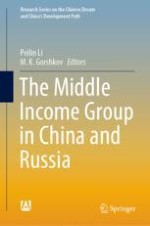2021 | OriginalPaper | Buchkapitel
2. Trajectories of the Middle Class’s Evolution in Modern Russia
verfasst von : N. E. Tikhonova, A. V. Karavay
Erschienen in: The Middle Income Group in China and Russia
Verlag: Springer Singapore
Aktivieren Sie unsere intelligente Suche, um passende Fachinhalte oder Patente zu finden.
Wählen Sie Textabschnitte aus um mit Künstlicher Intelligenz passenden Patente zu finden. powered by
Markieren Sie Textabschnitte, um KI-gestützt weitere passende Inhalte zu finden. powered by
